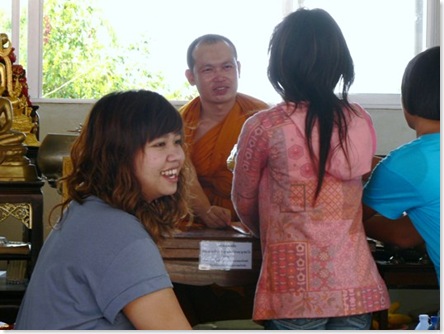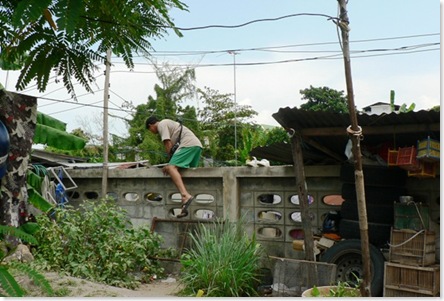A comment from the last post requires, or inspires me, to a fuller response. Actually, forgive me, it turned out rather long. Feel free to skim.
Sam said:
I have read Connie Howard’s article, and while it’s well-written and presents a convincing case (to me at least) for keeping InSite operating, I was hoping also to read a presentation of the reasons why the federal government might want to close the site, and an argument about those reasons. That part of the broader argument seems to me to be missing. From my limited exposure to this work, I understand that harm reduction is still a controversial approach to the problems around drug use and abuse and that there are valid reasons for opposing this approach.
Thanks Sam. The reason, I suspect, you didn’t get a presentation of the reasons why the federal government is opposed to InSite, is because they have never clearly stated them. All they have said, repeatedly, is that safe injection sites add harm and offer no hope. But, as Connie Howard pointed out, even their own study refutes that stance. According to Simon Fraser University criminologist Neil Boyd, who was hired by the Conservatives to advise the committee overseeing their study, the research shows that "InSite has no apparent negative impacts, has resulted in "modest decreases" in drug use, and has not disturbed public order." In fact, Boyd said, "InSite should not only be continued, but the program should be expanded to other locations." Adding, "I think our data suggests… the building of additional facilities of a similar kind in neighborhoods where they are needed would yield benefits much in excess of the costs required for such projects."
So what, in light of this, are the reasons for the Harper government’s ongoing resistance? I’m guessing it has everything to do with the government looking soft on drug use. And that’s not an image Conservatives are comfortable with. At InSite, drug abusers cannot be arrested and prosecuted. That, I’m sure, rankles. And the Tories certainly don’t want to offend groups like REAL Women, and the Canada Family Action Coalition, who were quick to thank the Health Minister for resisting pressures to support programs that aid people in using illegal drugs. The Conservatives are loathe to carve out exemptions because it looks like caving in.
And so, on the defensive, Tony Clement puts on his priestly raiment and tells us that the government’s approach is the one that’s more caring and compassionate. He says he is not about to give up on the addicts, like the folks at InSite. And he scorns the perceived "enabling" of harm reduction.
Tony Clement is not an unprincipled or, I’m sure, an uncaring person. I understand his reasoning. I once held to it. But after 20 odd years of being around the problem, I now see that it’s reasoning that has a higher regard for a personal conviction than for grappling with the complexities and devastation of chronic drug addiction, and the reality of life on the street.
 InSite does not give up on abstinence. But it does consider carefully the nature of addiction, and as a result offers a dignified and caring approach–that of harm reduction. Harm reduction is not a form of co-dependence, and is not the same thing as enabling. And there is no evidence that harm reduction encourages drug use. What it does do, is treat chronically afflicted addicts in a way that allows them to lead more bearable lives, and, in the process, find an oasis of calm, where choices may, perhaps, open up for then. For many addicts in Vancouver’s lower Eastside, InSite has been the first place they have encountered compassion, and is the first link they have had with the medical system.
InSite does not give up on abstinence. But it does consider carefully the nature of addiction, and as a result offers a dignified and caring approach–that of harm reduction. Harm reduction is not a form of co-dependence, and is not the same thing as enabling. And there is no evidence that harm reduction encourages drug use. What it does do, is treat chronically afflicted addicts in a way that allows them to lead more bearable lives, and, in the process, find an oasis of calm, where choices may, perhaps, open up for then. For many addicts in Vancouver’s lower Eastside, InSite has been the first place they have encountered compassion, and is the first link they have had with the medical system.
Without doubt, many lives have been saved through the presence of InSite. The reactionary charge, without evidence, has been made that InSite’s existence has lead to more lost lives than saved lives. But that’s like blaming medical clinics for the existence of disease. If it could be shown that InSite adds to the number of addicts then it has stepped out of the realm of harm reduction. If InSite’s existence caused more crime, more drug use, more drug trafficking, more HIV/AIDS, even more general social disorder, it would not be in line with harm reduction.
And as far as chronic addicts being enabled by being given clean needles, a sanitary place, with watchful and caring supervision, while they engage in something they would have otherwise done in an alley…well, I don’t think so. But let me add, not all drug abusers are equal, and I do concede that for some, a safe injection site may, or may not, perpetuate an early habit.
It is true that for some, the immediate negative consequences of drug abuse is enough to convince them to enter a program. For these people, no safe injection site is needed. But hardcore drug addicts have experienced every possible negative consequence, save death. As it happens, it’s these hardcore addicts that InSite attracts. And that should be a salient point for consideration. Every parent knows that equal treatment, is not necessarily fair or just treatment. InSite is simply calling for a recognition of that common understanding. And with political will and desire, an exemption to the drug law can be upheld. To refuse to see this, as far as I see, is a refusal not on humane reasons, but for reasons, political and ideological.
Finally, with respect to enabling, here is something of a parallel consideration: As Gabor Mate’ points out, we don’t refuse life-saving treatment for chronic smokers with lung cancer; or inveterate over-eaters for cardiac arrests; or workaholics for stress related strokes; or abused women for staying with their abuser. Does treatment enable these addictions? Should we refuse medical care here so that they might feel a greater negative effect of their choices?
So here’s a plea to Conservatives: Do no harm. A safe injection site can provide a little haven where patient and compassionate human contact, opens an avenue for self-respect and possibility. At InSite, harm reduction makes the lives of chronic drug addicts bearable, with the potential of ushering in rehabilitation for some. Overall, harm reduction broadens the scope of hope.
(In writing this, I’ve had much inspiration from Gabor Mate’s book, In the Realm of Hungry Ghosts. Mate’ has worked as a physician in Vancouver’s Downtown Eastside for over 12 years.)
Letter to Stephen Harper in support of InSite.






![P1060762 [520x390]](https://growmercy.org/wp-content/uploads/p1060762-520x390-thumb.jpg)
![P1060767 [520x390]](https://growmercy.org/wp-content/uploads/p1060767-520x390-thumb.jpg)
![P1060768 [520x390]](https://growmercy.org/wp-content/uploads/p1060768-520x390-thumb.jpg)
![P1060776 [520x390]](https://growmercy.org/wp-content/uploads/p1060776-520x390-thumb.jpg)
![P1060779 [520x390]](https://growmercy.org/wp-content/uploads/p1060779-520x390-thumb.jpg)
![P1060782 [520x390]](https://growmercy.org/wp-content/uploads/p1060782-520x390-thumb.jpg)
![P1060778 [520x390]](https://growmercy.org/wp-content/uploads/p1060778-520x390-thumb.jpg)
![P1060805 [520x390]](https://growmercy.org/wp-content/uploads/p1060805-520x390-thumb.jpg)
![P1060800 [520x390]](https://growmercy.org/wp-content/uploads/p1060800-520x390-thumb.jpg)
![P1060794 [520x390]](https://growmercy.org/wp-content/uploads/p1060794-520x390-thumb.jpg)
![P1060824 [520x390]](https://growmercy.org/wp-content/uploads/p1060824-520x390-thumb.jpg)
![P1060812 [520x390]](https://growmercy.org/wp-content/uploads/p1060812-520x390-thumb.jpg)